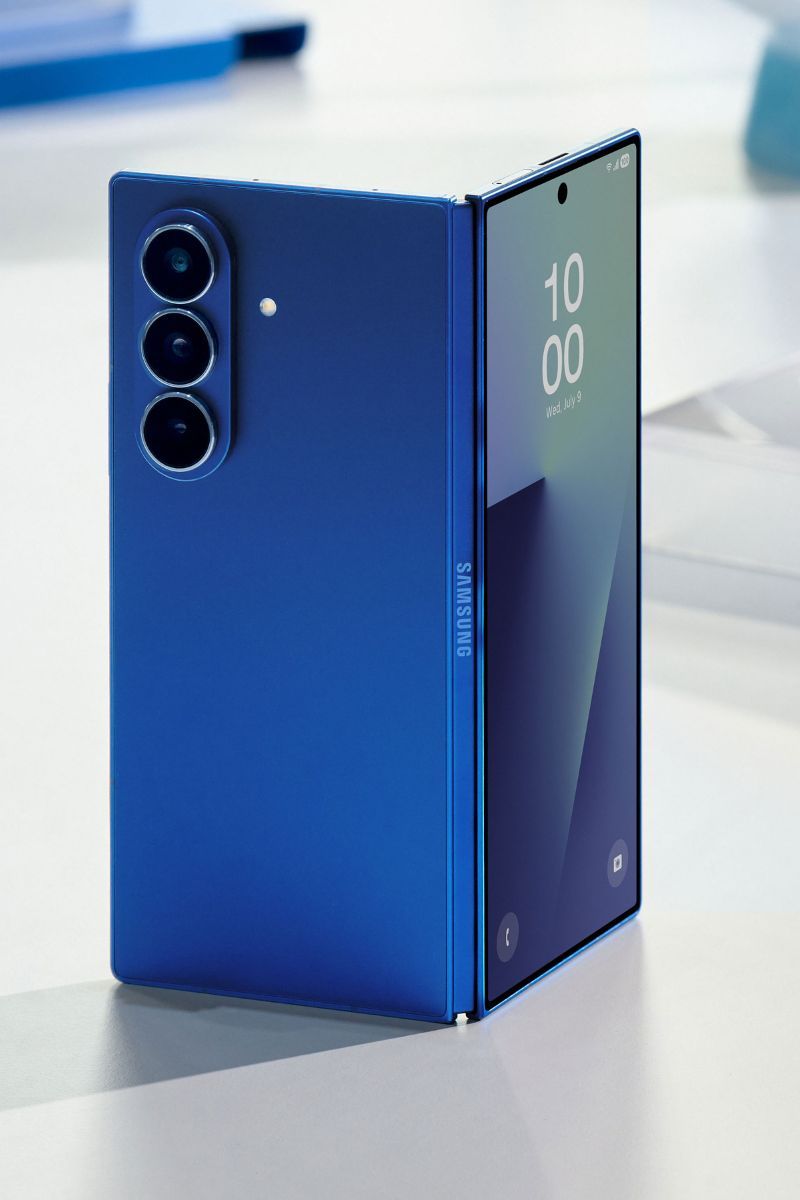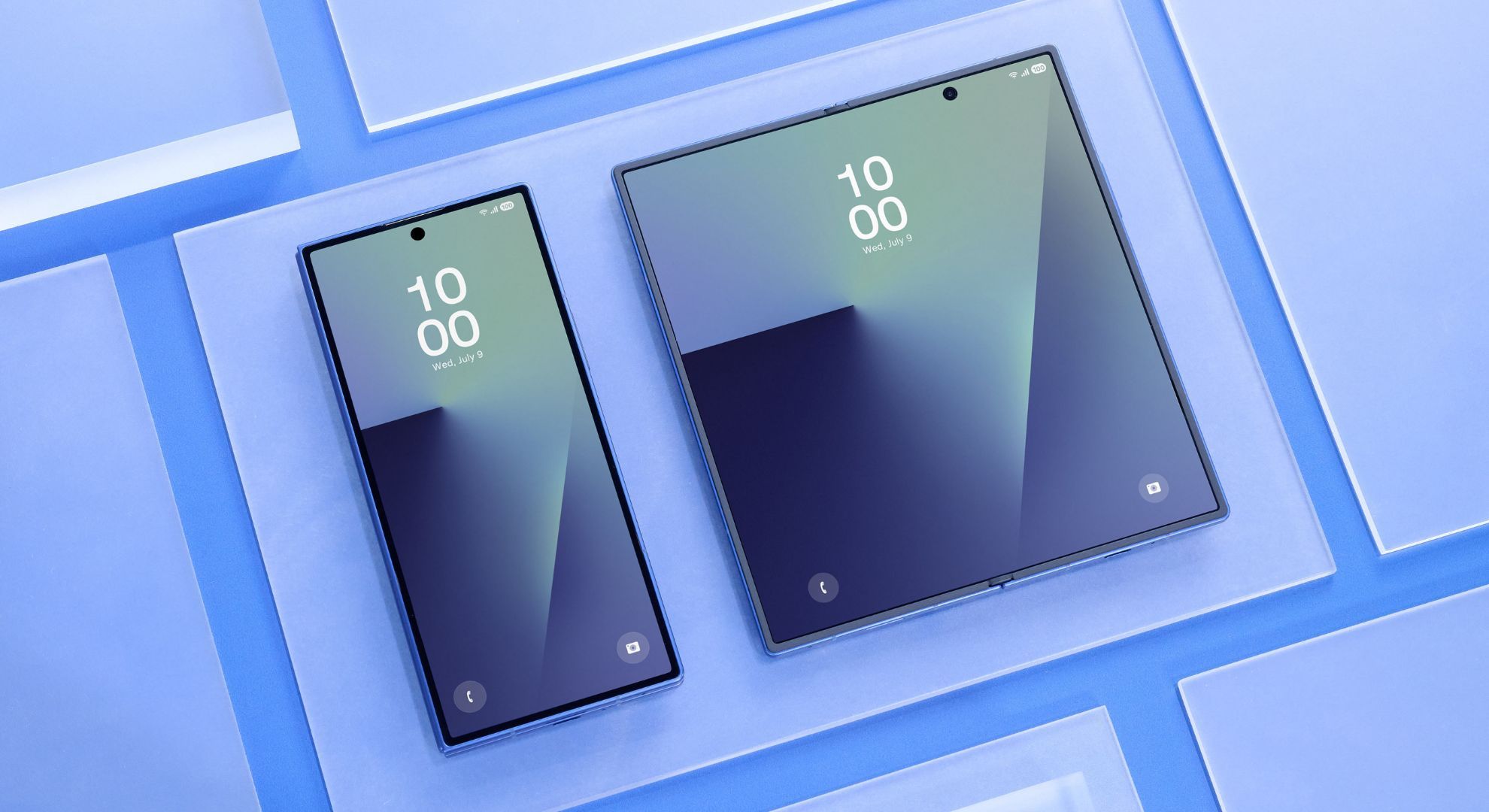Growing up in the early 2000s, witnessing the evolution of mobile technology was the millennial equivalent of watching the space race, just without the threat of nuclear armageddon. Coloured screens? Whoa. A camera on a handheld device? No way. Full touchscreen display? What are we, in The Jetsons?
But then came the slabification. Safe, sleek, and about as thrilling as a PowerPoint template. Phones became predictable. Pocketable. Smooth in shape, smooth in function, occasionally edgy, but mostly, meh. In between, phone companies threw spaghetti at the wall. Slide-outs, swivels, dual screens, phones shaped like powder compacts. Most fizzled out within a year.
That was until 2019, when someone at Samsung asked the question: “What if we take a mini tablet and fold it into a phone?”
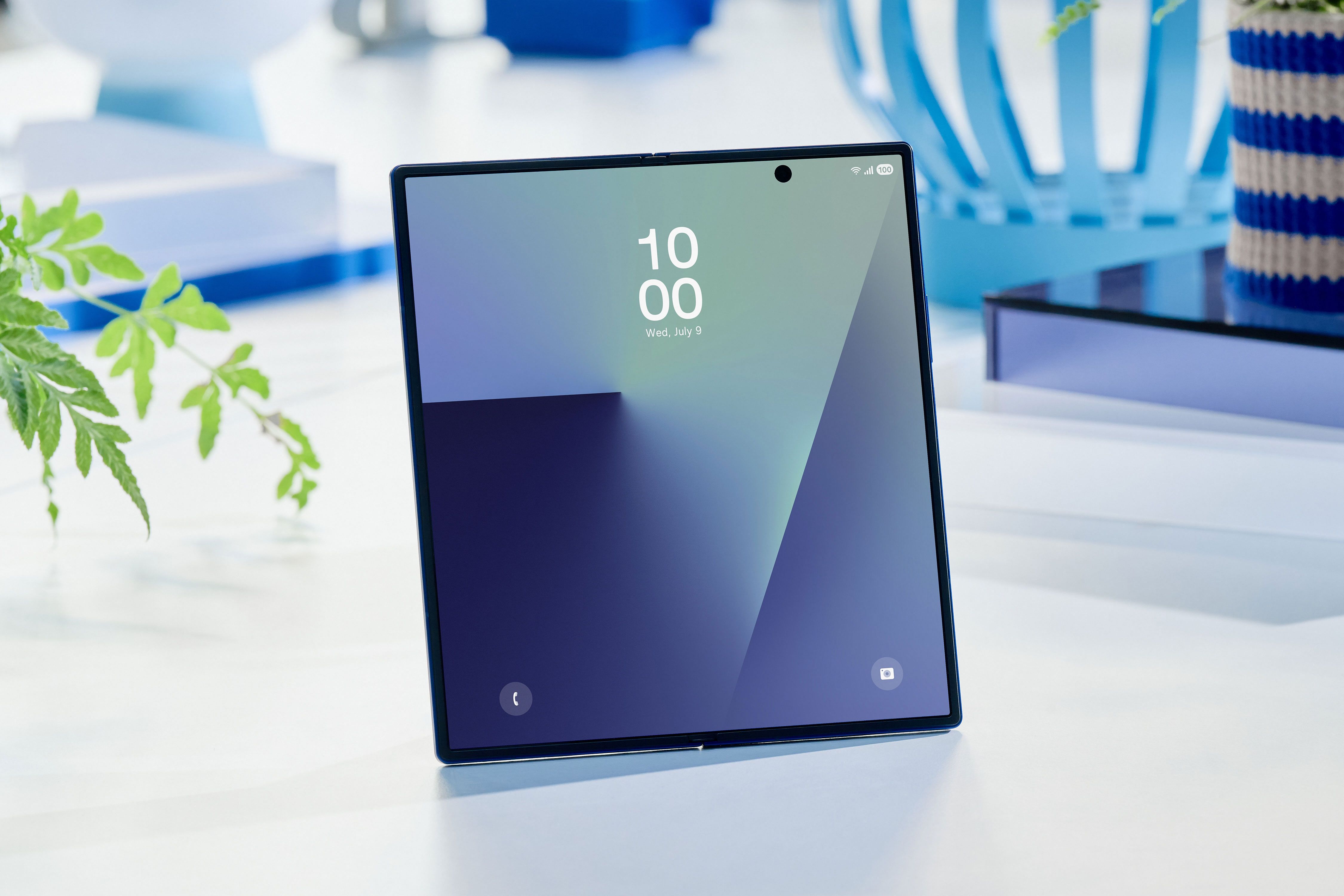
First Impressions
Now in its seventh generation, the Samsung Galaxy Z Fold has moved beyond gimmick. It is quietly becoming a real everyday device. You can feel the difference the moment you hold it. Last year’s Fold6 was 12.1mm thick when closed. This one is just 8.9mm. The Fold7 looks like it has been on Ozempic, slimmed down, sleeker, but without the dead-eyed, calorie-deficit stare.
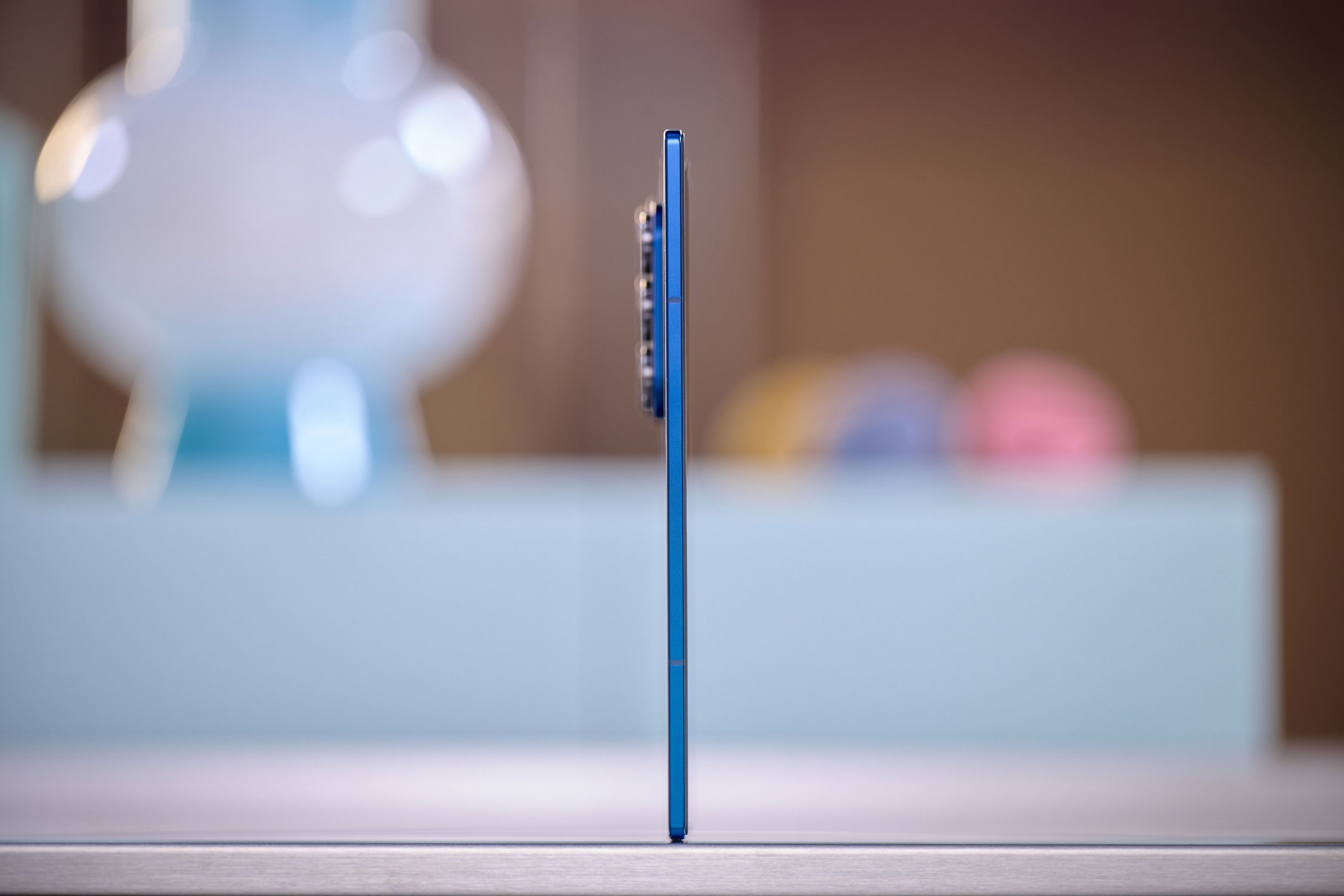
Most of the glow-up comes from the outer display. It is now 6.5 inches with a 21:9 aspect ratio, a relief after last year’s awkward, finger-yoga screen. Unfold it, and it doesn’t even feel like a foldable anymore. I wrapped it in a case and showed it to my mom. She thought it was a regular phone. It wasn’t until I took off the case and opened it that the awe kicked in. The same awe tech nerds probably felt the first time they scanned their fingerprint to unlock a phone.
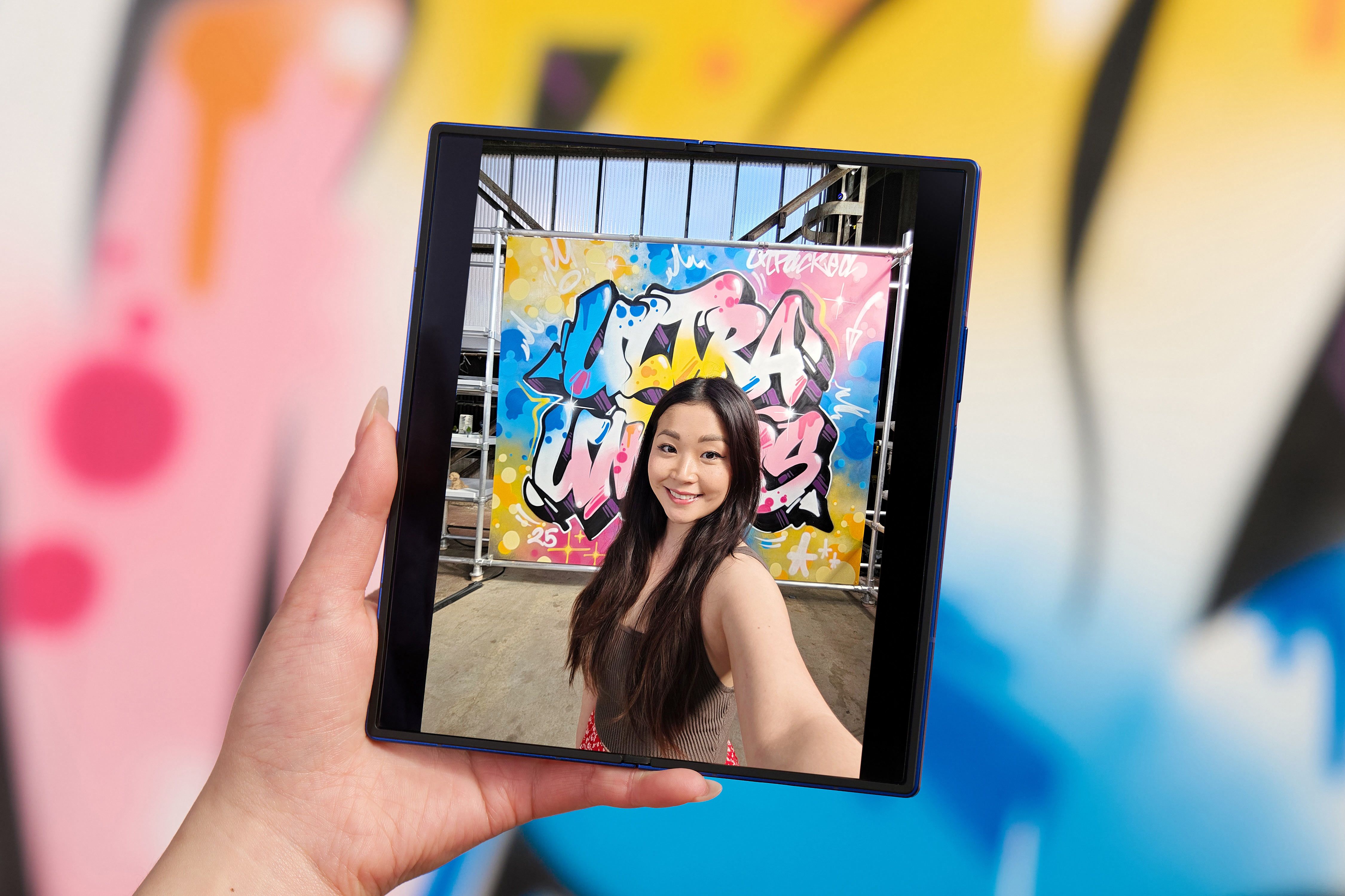
It helps that the edges are now more rounded, and the navy blue review unit we received looks like the Savile Row equivalent of a smartphone. Sharp, expensive, but not shouty. It looks like a slab, but it doesn’t quite act like one. And then there’s the camera bump. It is massive. Dramatic enough to qualify as its own fold. But more on that later.
Everyday Magic
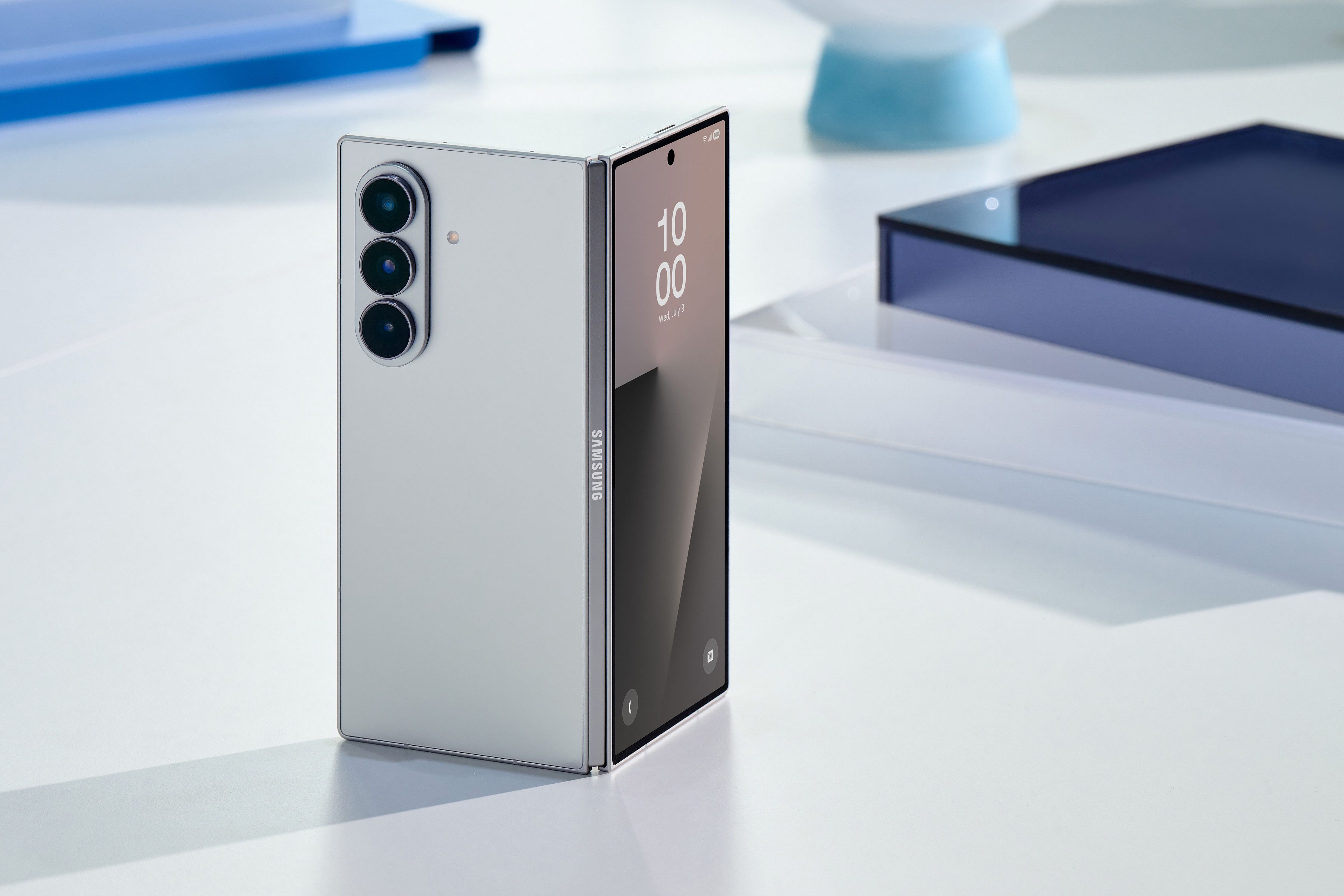
I can’t quite explain the experience of unfolding it without muttering khul ja sim sim under my breath. That is, if you can manage to unfold it smoothly. Samsung’s made the Fold7 so slim, and the new teardrop hinge so stiff and precise, that opening it feels almost surgical at first. You’ll catch yourself doing it gingerly, like you’re handling a vintage watch over a silk pillow.
Last year’s Z Fold6 measured 5.6mm when open. Even its closest rival, the Google Pixel 9 Pro Fold, comes in at 5.1mm and weighs 257 grams. The Galaxy Z Fold7? A noticeable leap. Just 4.2mm when open and 215 grams in hand. It’s so thin that the USB-C charging cable it ships with is almost as thick as the unfolded phone itself.
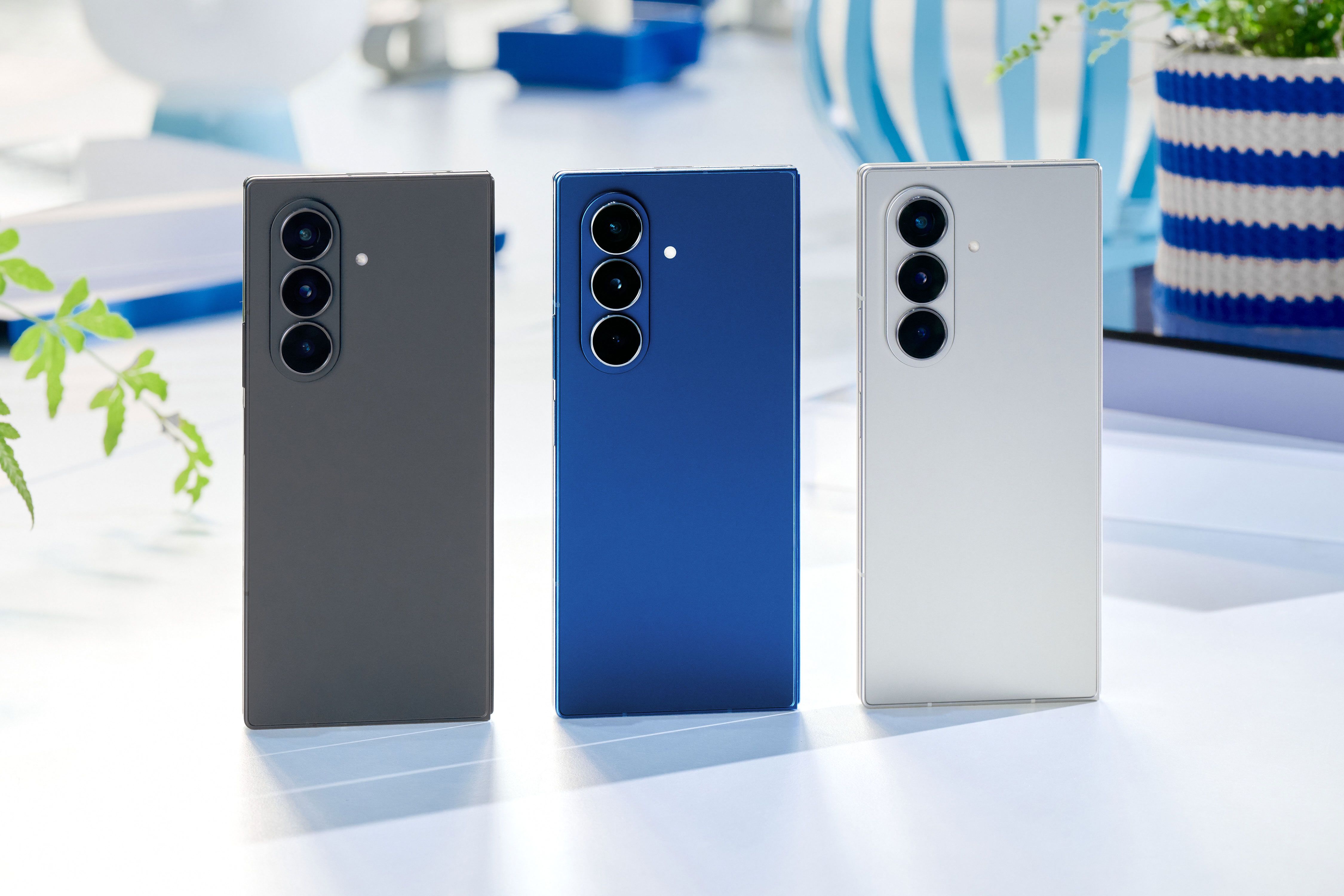
Once inside, it is a different universe. The Snapdragon 8 Gen 3 for Galaxy handles multitasking with a kind of surgical grace. Three windows? Smooth. Floating apps? Effortless. You can have Gmail open on one pane, a Google Doc on another, and still squeeze in a browser tab to look up whatever is happening with a Coldplay concert again.
This isn’t just about convenience. It is about freedom. You can research, write, edit, and file an entire story on the go without dragging out a laptop. For travelling journalists or anyone who works in transit, that is a genuine game-changer. Uber’s interface splits beautifully. One half shows your ride, the other half is perfect for scrolling through HR policy PDFs you’ll never read.
And here’s the surprise: you’ll start looking for excuses to unfold the thing.
Design Friction
It is not all seamless. The Fold7 has literal wobbles. The camera module is so prominent that the phone can’t lie flat on a surface. Tap the screen and it wobbles like a table with a missing leg. A case isn’t optional. It is necessary.
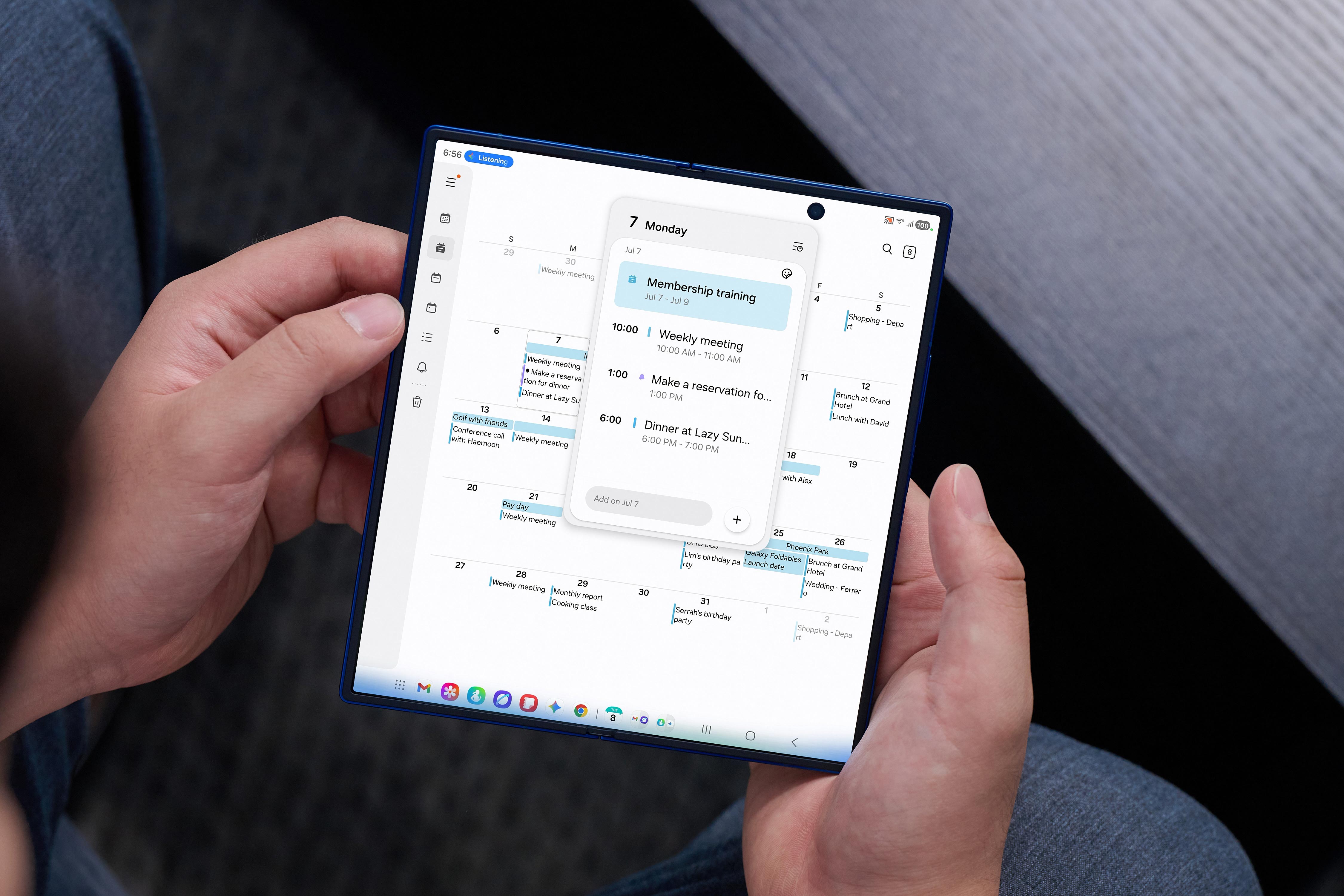
Unfolded at 8 inches, the tablet display is expansive and 2,600-nit levels of bright. That’s a lot. Samsung also claims there’s new tech that improves visibility while wearing polarised sunglasses. All of that is great, but I do have a bone to pick here, and not necessarily with Samsung.
When opened, the phone doesn’t quite resemble a traditional rectangular tablet. It looks more like a square with a slightly visible crease at the hinge. That’s not the real issue, though. The issue is content consumption. Watching Netflix, YouTube, and the like in full-screen mode means two massive, eyesore-worthy black bars at the top and bottom. Yes, you can zoom in, but that just cuts off parts of the frame.
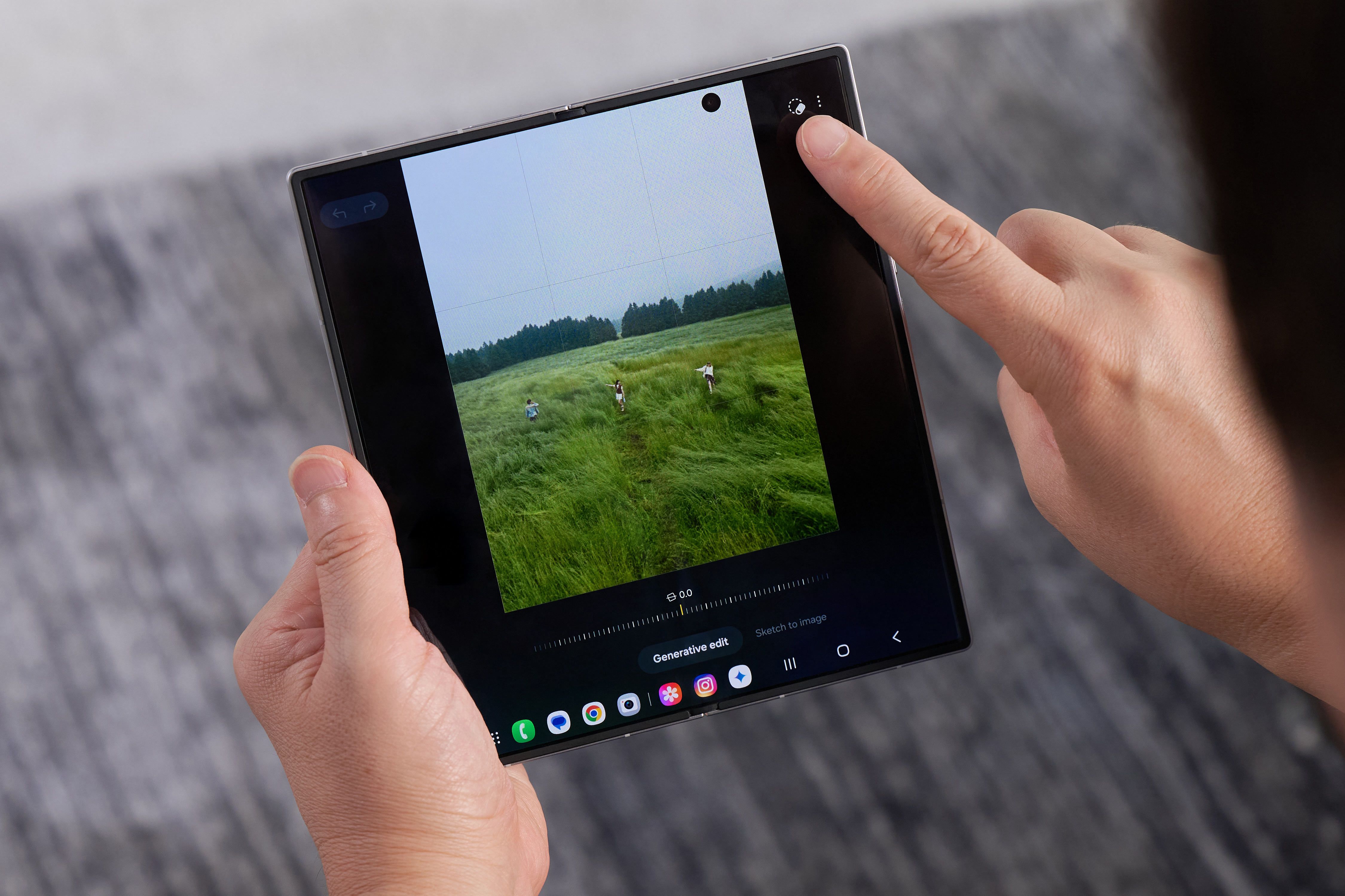
And while some apps like Gmail, Chrome, or Samsung Notes take full advantage of the screen, others like Instagram or Threads still look awkward. Developers haven’t fully embraced foldables yet. It’s like you’re stuck in this middle space between brilliance and beta.
Then there’s the lack of S Pen support. I get that it was likely left out to keep the form factor thin, but it still feels like a missed opportunity on a screen this impressive. Samsung as a whole seems to be on some kind of S Pen detox lately. Even the Galaxy Ultra has quietly taken away a few of its old fidget-friendly features.
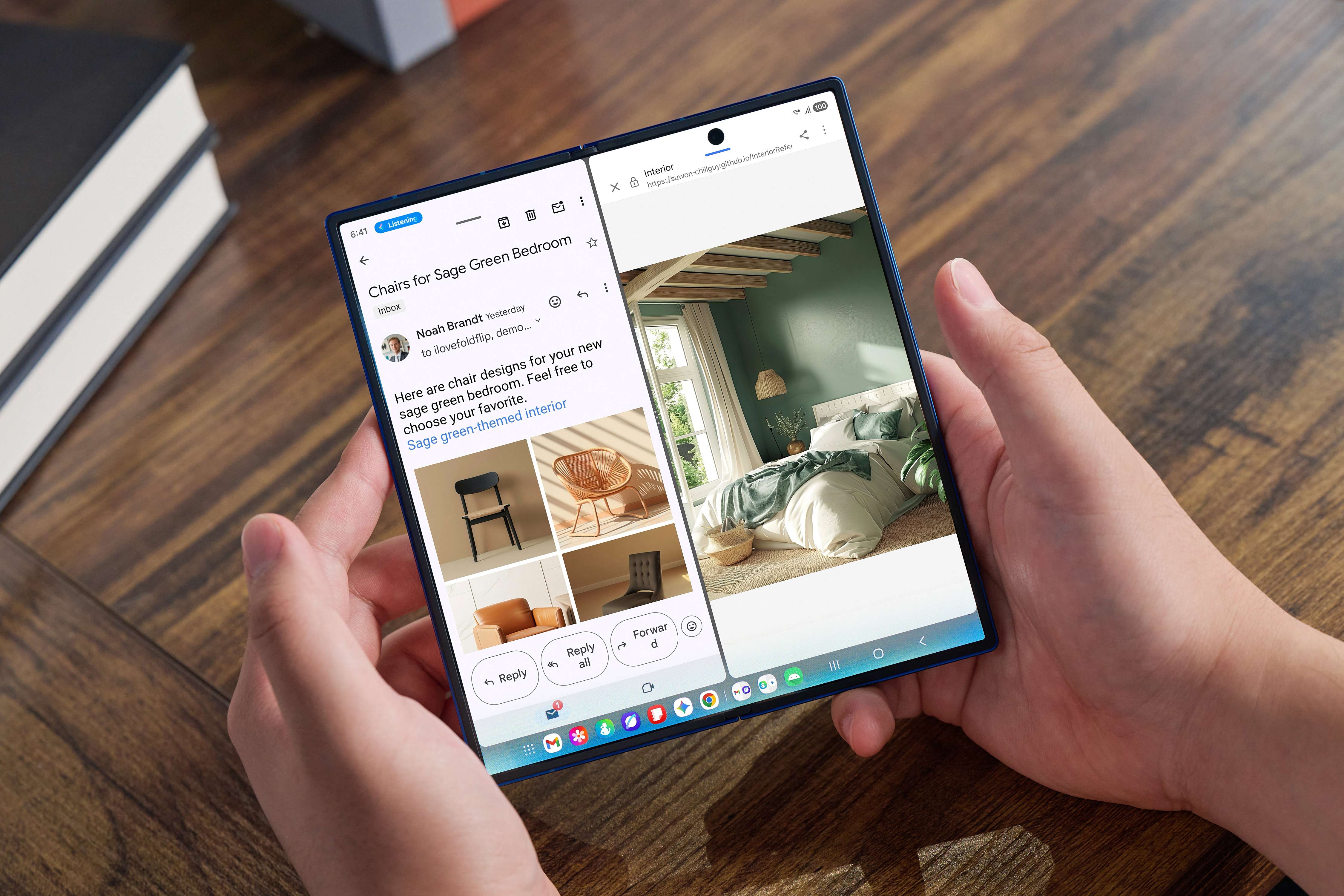
And then there’s the battery. It’s unchanged from last year at 4,400mAh. To be fair, the Snapdragon 8 Gen 3 for Galaxy does a lot of heavy lifting in terms of efficiency. Nothing heats up, lags, or throws tantrums. Still, not switching to a silicon-carbon battery feels like a missed trick. The new tech promises higher energy density in the same space, which means either bigger batteries or thinner phones. But honestly, you won’t complain much. The Fold7 easily lasts a full day and supports 25W fast charging.
Camera Payoff
The headline act is a 200-megapixel main sensor, lifted straight from the S25 Ultra, backed by a 12-megapixel ultrawide and a 10-megapixel 3x telephoto. There are also two 10-megapixel selfie shooters, one on the cover screen and one hole-punch sensor inside the main display.
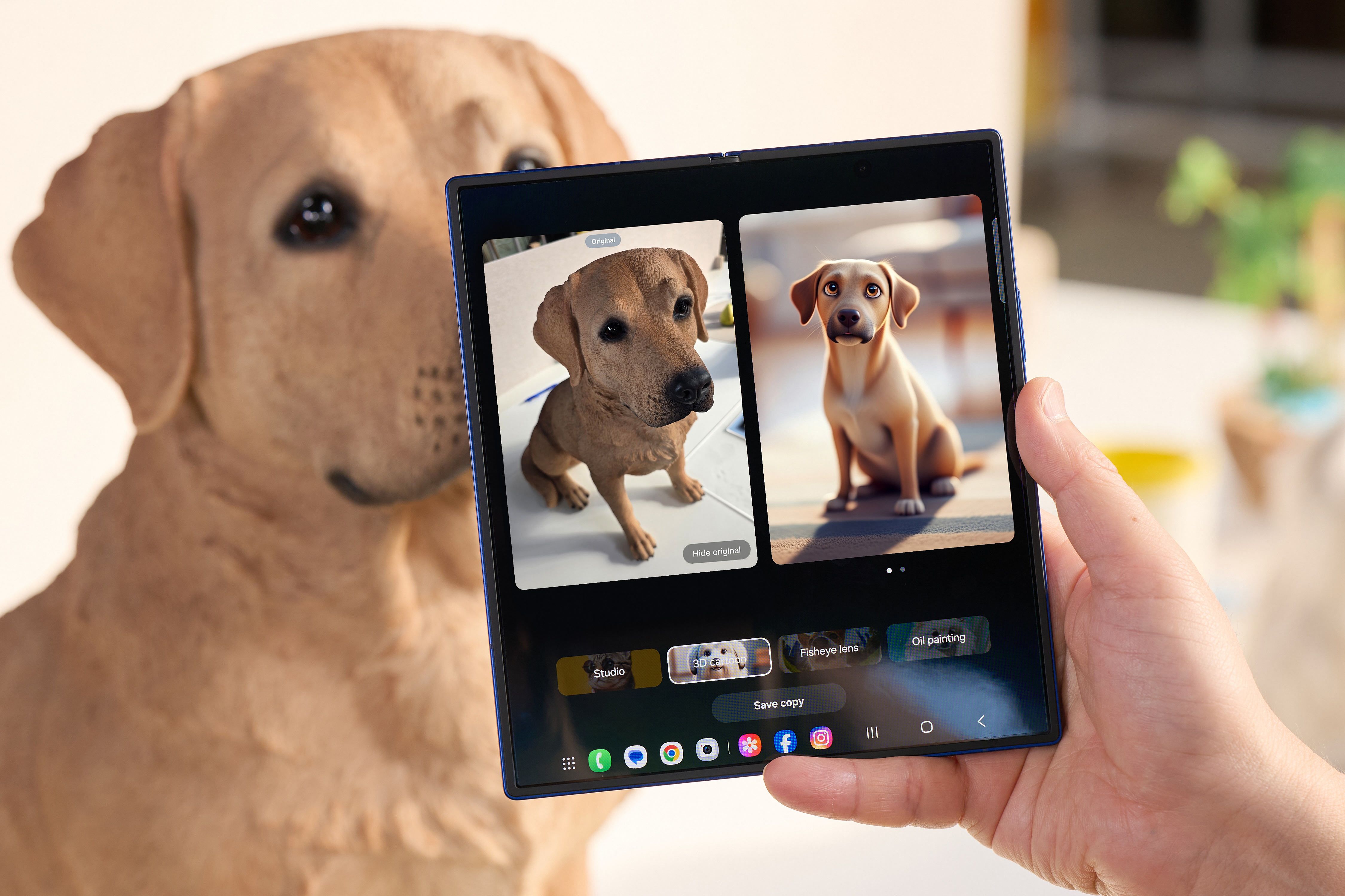
And that 200-megapixel camera is good, just like it is on the Ultra. In low light, shots stay sharp and detailed. Colours lean Samsung, which is to say reds are very red and blues are extremely blue. The ultrawide holds its own. The telephoto is solid up to 5x. Beyond that, you’re entering the “why do you even need this much zoom” zone. At 6x, my cat starts looking less like a pet and more like a fuzzy Monet painting.
Samsung’s portrait mode at 3x still wipes the floor with everyone else. Subject separation, bokeh control, skin tone, all pretty good. It’s dramatic, clean, and consistent. So yes, that massive camera bump earns its real estate.
Smarts and Shortfalls
I still don’t quite know what to make of AI on smartphones, especially for Indian users. Removing background clutter from photos is neat. Circle to Search is helpful. Generative Edit and Audio Eraser, sure. But they feel more like workarounds for Photoshop and Google Image Search than a new frontier.
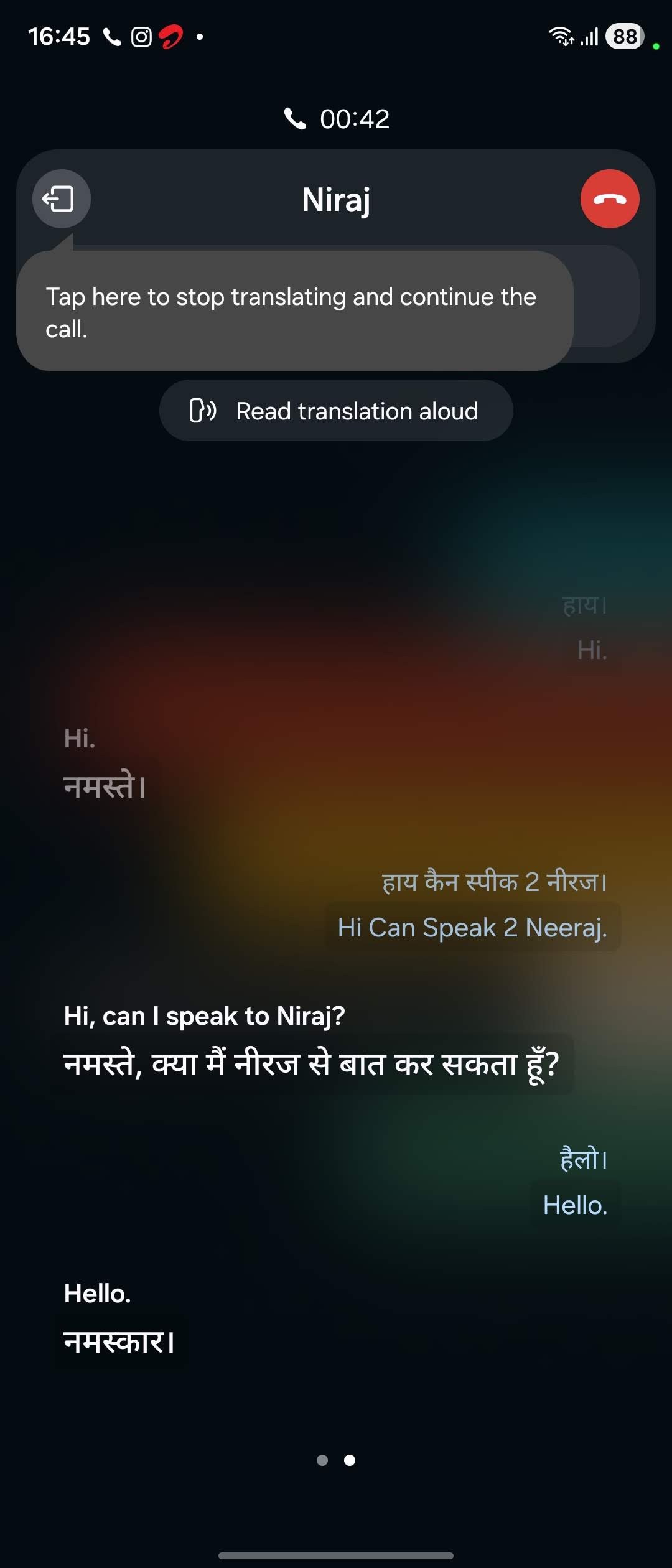
However, this isn’t just a Samsung issue. AI usefulness across companies, devices and platforms still feels half-baked. Many tools struggle in real-world situations, like dodging a credit card sales call. Even features with genuine potential, such as live transcription, AI summaries or call assist, often falter with Indian accents and the chaotic nature of our calls. Less Jetsons, more Flintstones.
Final Word
Forgive the drama, but I truly believe we're now living in a pre-Fold7 and post-Fold7 foldable era. The pre was full of compromises. A novelty outer display that felt more like a beta test, a battery that barely made it through the day, and a camera system that looked like it was borrowed from a phone half its price. The post, at least in the case of Fold7, fixes nearly all of that.
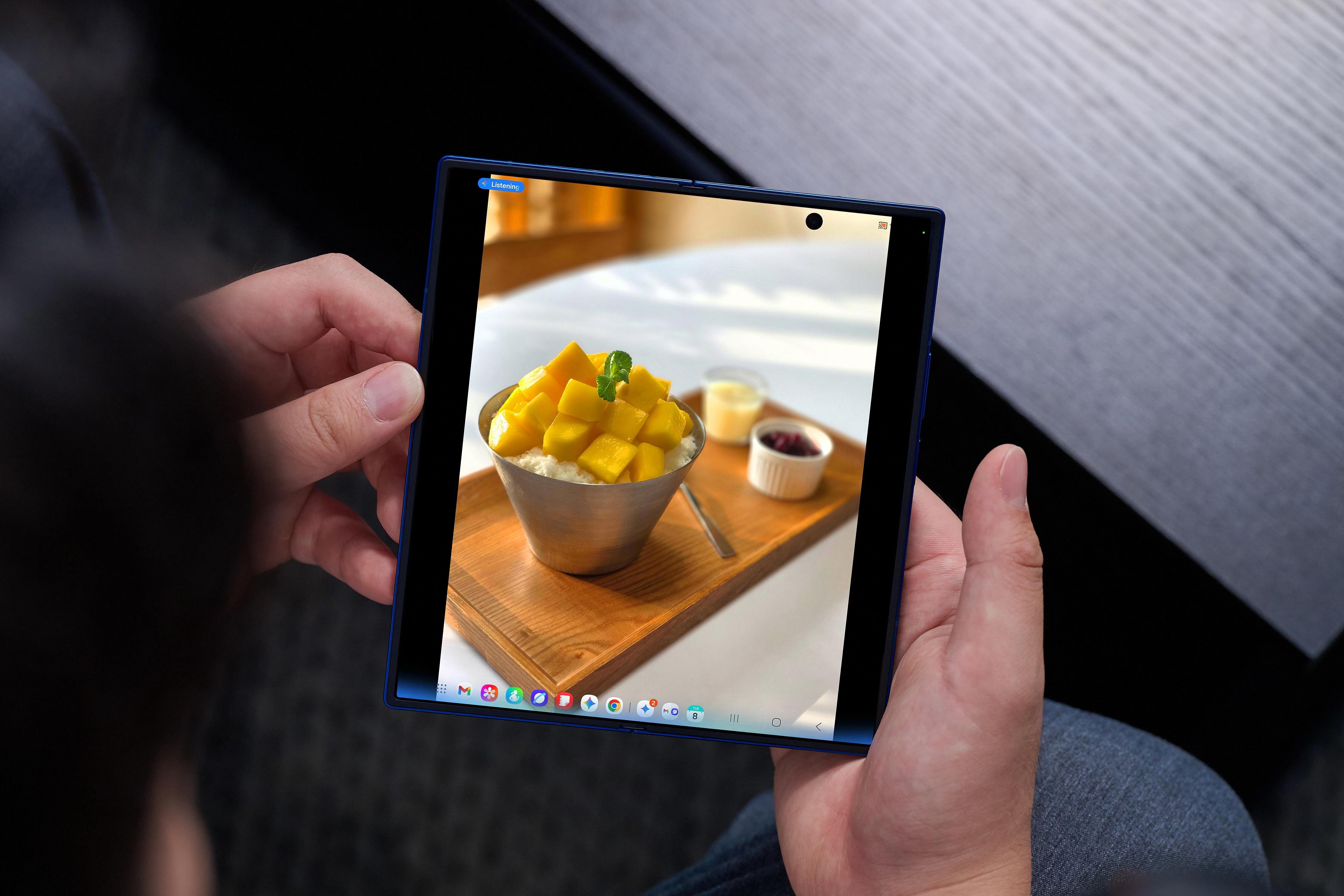
Should you buy it? Honestly, yes. With top-of-the-line flagships from Apple and Samsung, the best-of-the-best slab phones now brushing past ₹1.5 lakh for respectable storage, why not pay a little more for a lot more? As in, twice the screen more.
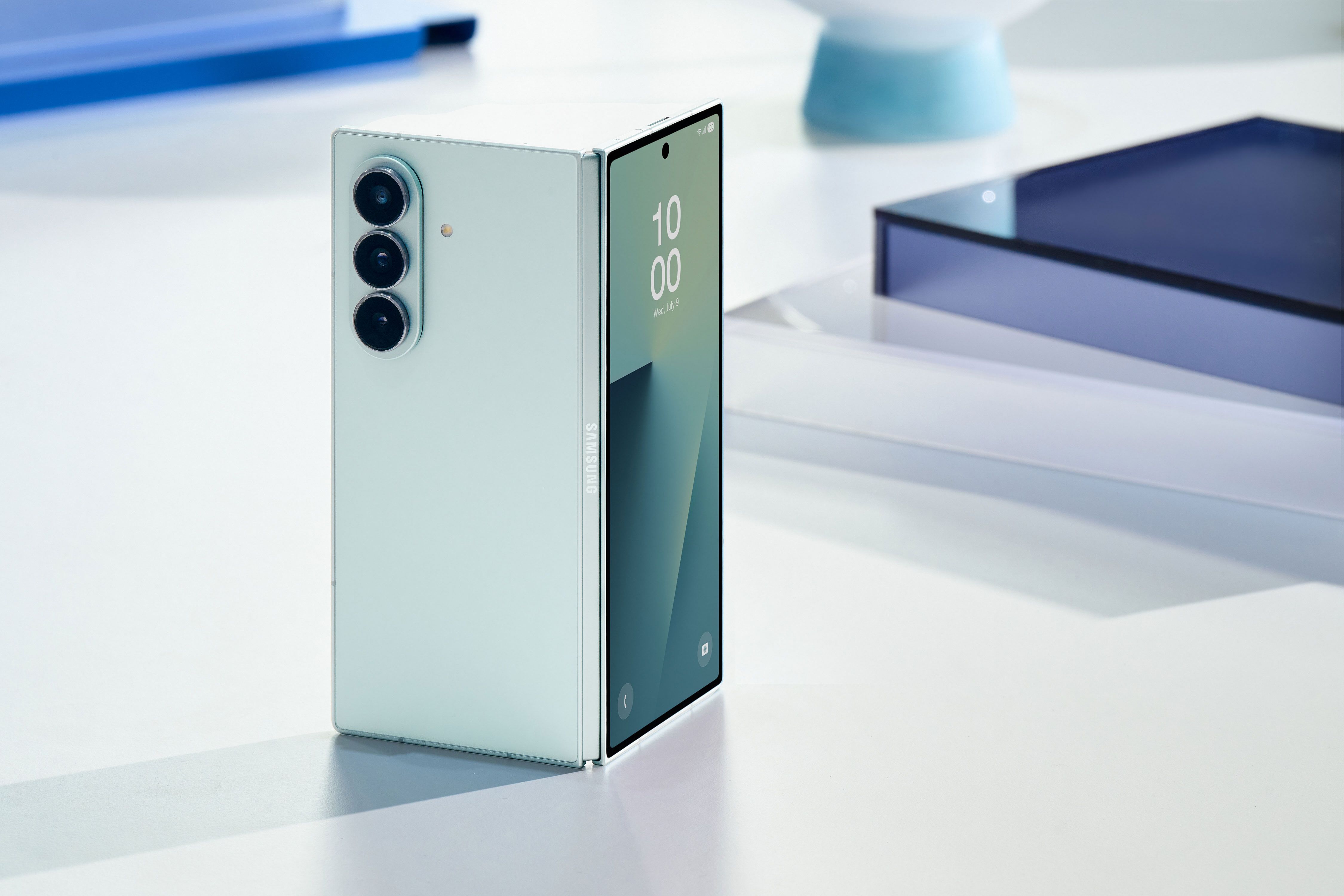
The Fold7 feels like the first foldable that’s genuinely ready for everyday use. The pre-Fold7 era was exciting but clumsy, all promise, little polish. This one is both here and there, like it should be. Quirks? Sure. But they feel manageable now. In a world of gimmicks, the Fold7 finally feels ready. And this time it doesn’t fold under pressure.
